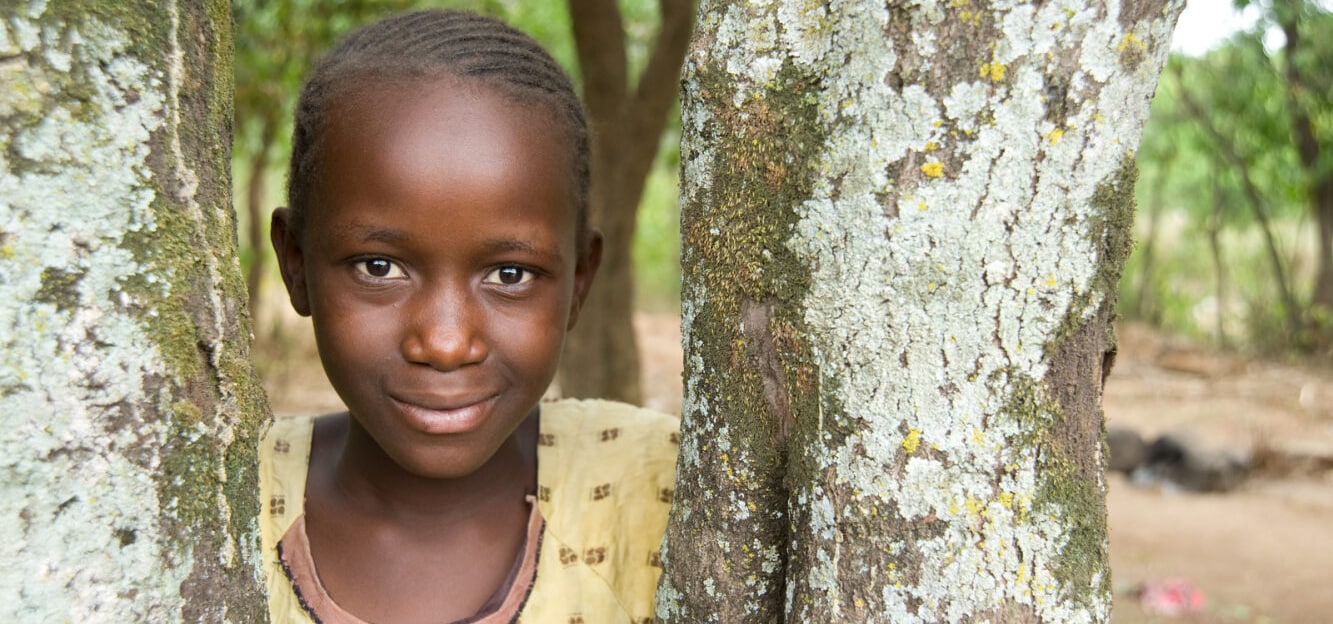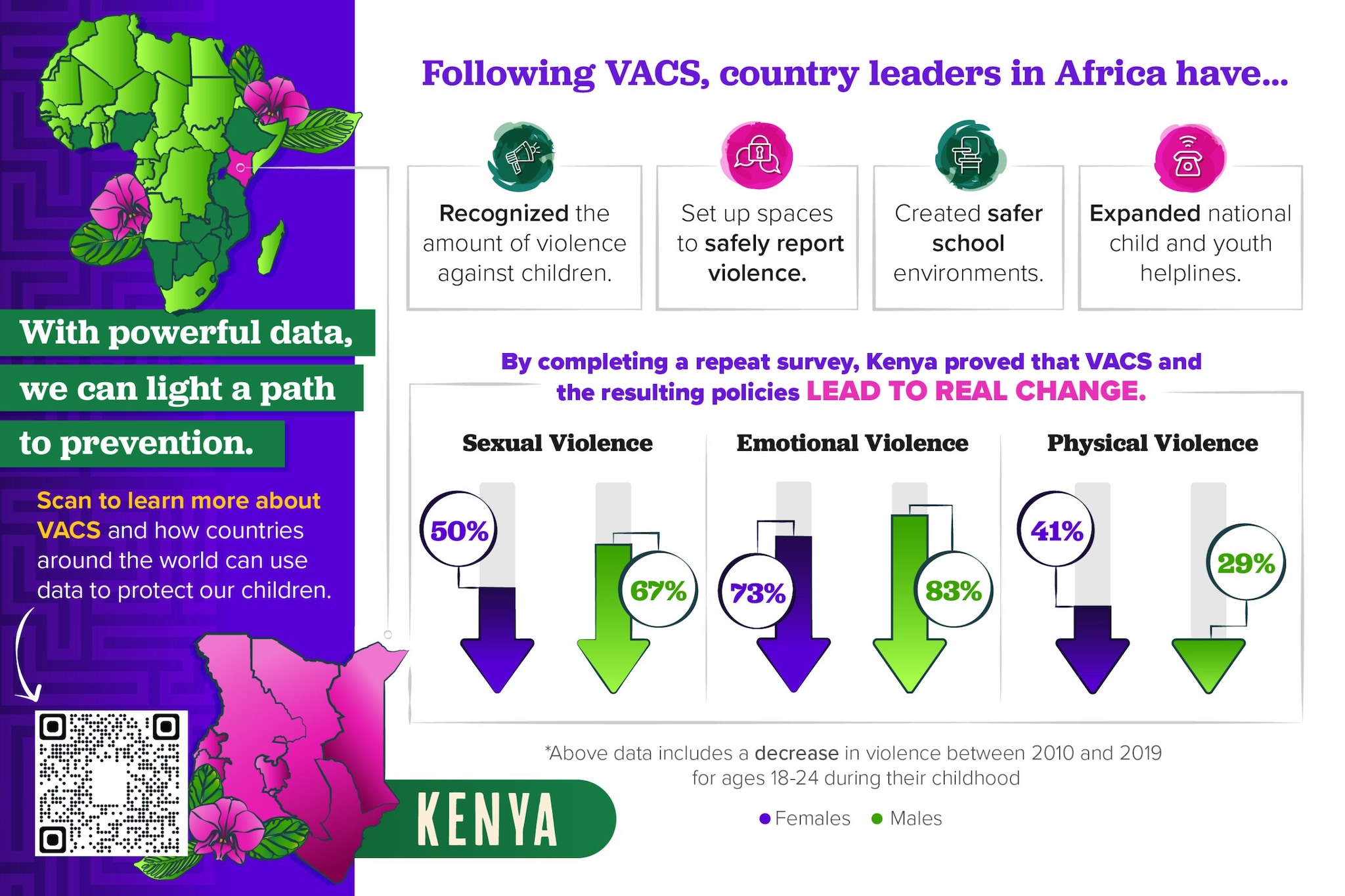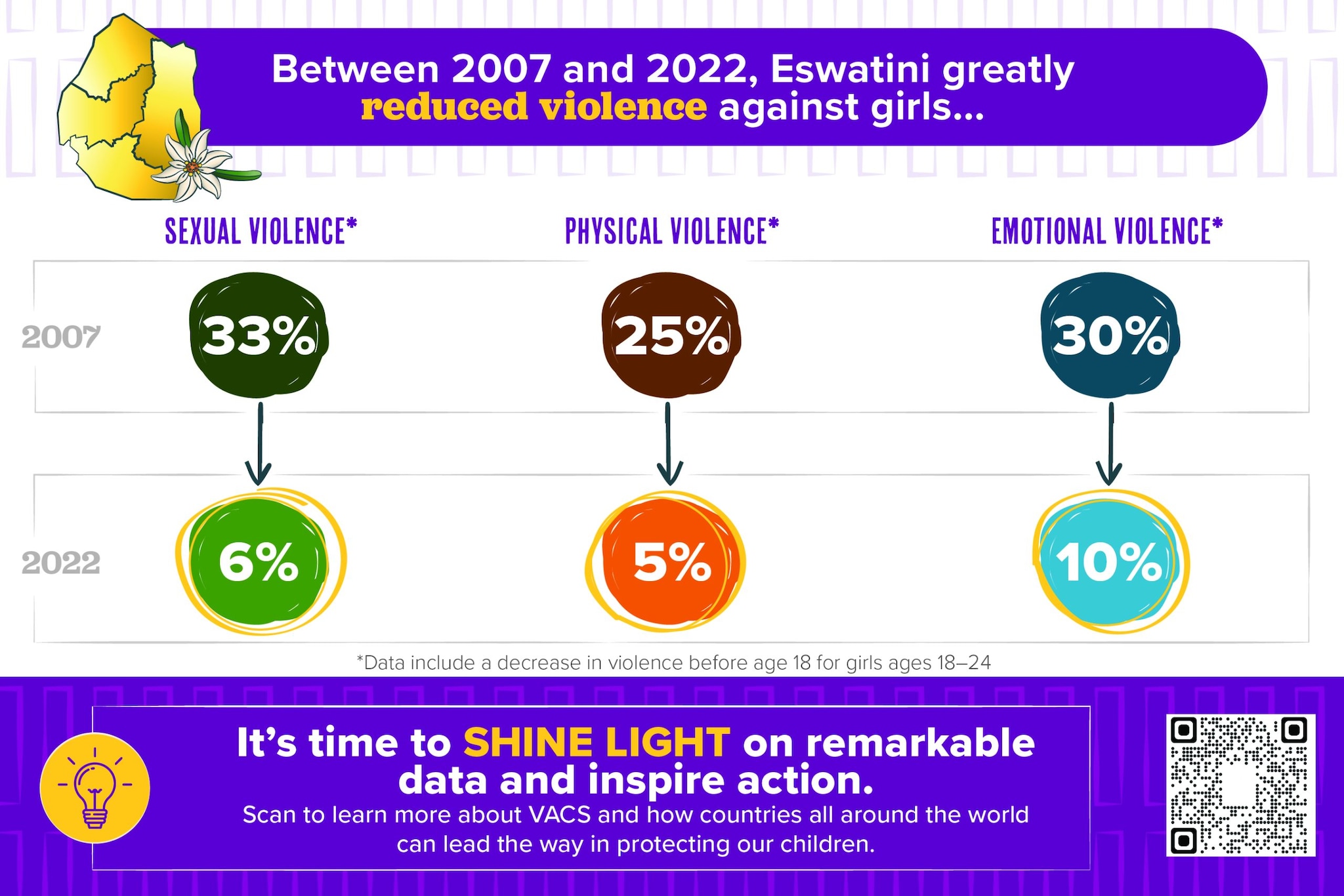Data Shines a Light on Reducing Violence in Kenya and Eswatini

Every year, nearly one billion children – half of all the children in the world – experience violence, and the lasting effects can linger well into adulthood. To prevent violence, the first step is understanding how and where it occurs. The Violence Against Children and Youth Survey (VACS), a national household survey, does just that. VACS helps to shed light on the physical, emotional, and sexual violence against children and youth ages 13 to 24 years.
Over 20 countries have administered at least one VACS, with the majority of these funded by the President’s Emergency Plan for AIDS Relief (PEPFAR) and with support from the Centers for Disease Control and Prevention (CDC). The survey aims to improve our understanding of violence against children and young people and how violence relates to HIV prevention and care outcomes. As a global gold standard, VACS is a vital source of data on violent exposures among children. The results are used to inform policy and programs that help create a safer world for all. While the surveys show ongoing declines in violence, they also highlight a significant ongoing prevalence of violence among young people in these countries.
Turning the Tide in Kenya and Eswatini
In Kenya, the first VACS was administered in 2010, with a follow-up survey conducted in 2019. Notable declines in violence were observed over the nine-year period. For females ages 18-24, lifetime sexual violence declined by 50 percent, physical violence declined by 41 percent, and emotional violence declined by 73 percent, respectively. Similarly, for males ages 18-24, lifetime sexual violence declined by 67 percent, physical violence declined by 29 percent, and emotional violence declined by 83 percent.

Eswatini’s first VACS was conducted among females in 2007, and the second, completed in 2022, included both males and females. Survey results showed an 81 percent decrease in sexual violence before the age of 18 among girls aged 18-24. While such reductions in lifetime experiences of sexual violence among children and youth are promising, the VACS has also indicated additional efforts are needed to protect children. In Eswatini, roughly half of all adolescent girls and young women continue to experience a first sexual experience that was forced or without their consent, and an estimated 29 percent experienced their first incident of sexual violence before the age of 14.
VACS results also provide evidence that such early experiences of sexual violence are associated with substantial HIV-related risk behaviors later in life. The surveys also found that girls and young women who experienced sexual violence in childhood are three times more likely to have recently engaged in transactional sex when compared to those who did not.

The Way Forward
Additional work is needed to understand the reasons for the decline in violence and whether national laws, policies, and youth violence prevention programming in these countries have contributed to these declines. Also, research efforts are needed to examine why some populations remain at higher risk of experiencing violence during these declines.
Yet, VACS remains a powerful tool to spark real change and action in global violence prevention efforts for children and youth, which is a necessary step to reach HIV epidemic control. As CDC works to eliminate HIV as a global epidemic and help those who need it most, we must build on successes and continue to use the VACS data to guide our PEPFAR violence prevention and response efforts. Through increased support and commitment to expanding violence prevention programming, we can help eliminate gender-based violence and all forms of stigma and discrimination in our communities.